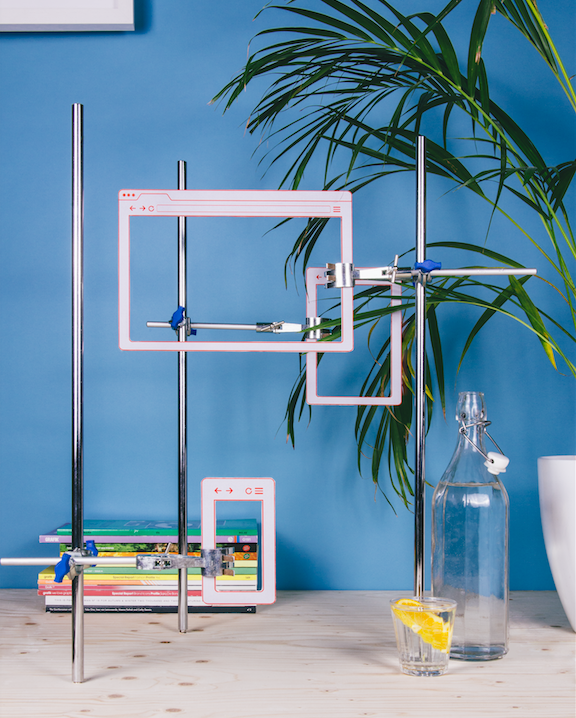The Internet of Places
A new wave of apps are bringing digital interaction into the real world. Rather than looking at your computer to see the next stage in the evolution of the internet, you should be looking out of the window.

The blurring of the line between physical and virtual is an oft-cited consequence of the internet. From finding a date to calling a taxi and communicating with friends, we now live as much of our lives through online portals as we do offline. But the inherent promise of the post-millennium internet, that the physical and virtual will become integrated, has failed, for the most part, to come to fruition.
Recently however, new technology has made that promise a little more achievable, as users are able to finally break out of their screens and bring digital interaction into the real world. The Internet of Things, a term coined by the British technology pioneer Kevin Ashton in 1999, refers to everyday objects and appliances which are connected to, and controlled via, the internet and thus made digitally interactive, such as Nest thermostats and smoke alarms.
This confluence of the real and the virtual is already being heralded as the future of technology, but there’s another, similar development on the horizon, the Internet of Places. With the technology available in everybody's pockets today, people could create their own content and leave it for others to discover. This kind of geographic Tumblr could be described as a real-world internet and it has become possible because of the proliferation of smartphones and data plans: we passively carry internet connections around with us all the time.
Designers and developers are creating apps that cross the physical-virtual divide by connecting digital information, such as text, photos and audio, to real-world locations. The idea comes from Åsmund Sollihøgda, one of the creators of Recho (a combination of ‘recording’ and ‘echo’), an app that allows users to leave a sound in a specific location for someone else to find later.
Sollihøgda and Recho co-founder Mads Damsbo both “loved walking the streets while listening to podcasts” which led to the idea that a recording could “belong” to the place where it was made, and that something digital could be connected to a physical space. “We realised that with the technology available in everybody’s pockets today, people could create their own content and leave it for others to discover,” Sollihøgda says.
What Recho pioneers is not just a new form of internet but “a new activity”, providing a platform which is an “audio museum where users can participate in collecting content for the future.” The interaction is twofold: users generate content by placing sounds in the landscape, but they also wander around the world, using the app to search for hidden audio.
The Internet of Places also enables us to create new relationships with our surroundings. Slight, created by Jon Nash and Michael Petruzzo, is a way to integrate data into geography, inspired by the landscape of Los Angeles. “Gangs would come through and tag the walls, then the city would paint over it, then another gang would tag it,” Nash says. “What’s the territorial equivalent in social media? That was what we set out to look at.”
Through the app, users can imprint their thoughts on the city in text. Location markers pop up, Google Maps-style, to denote a message left behind that others can read. The goal is to “create a comment feed for everywhere.” Gangs would come through and tag the walls, then the city would paint over it, then another gang would tag it. What’s the territorial equivalent in social media?
With Slight, location becomes an online identity which is more powerful than a Facebook account. A place can demonstrate our personality and tastes just as much as our internet browsing habits can. “Where we inhabit does a good job of sorting out what kind of person we are,” Nash explains. Slight activates this identity and allows us to communicate with like-minded people in the same area, creating a social network that is both physical and virtual.
Where Slight is devoted to short, often humorous, observations, Hi is an Internet of Places platform devoted to longer musings. With a strapline of “Capture. Write. Publish”, the company, which was co-founded by the digital publishing luminary Craig Mod, encourages its users to create textual portraits of the places around them. To date, the site has published “1,285,431 words in 2,599 cities.”
What Recho, Slight and Hi share is an ability to catalogue, dissect, and tag geographically, creating a searchable record of stories as they pass through real space. The development of such a database is one of the many practical applications of the Internet of Places – as Twitter tracks news as it spreads through the internet, so these platforms might process information as it moves across the earth.
Traces bills itself as the killer app for place-based information. It enables users to leave an ephemeral message in a specific spot for a friend to find later – a virtual geo-cache capsule which can take the form of text, images, video or audio. Traces brings the content we often find online into the real world, giving it added significance in the process. Krak is a tool that uses a small, Bluetooth-enabled attachment hooked to a skateboard to track skaters’ tricks automatically.
The app component sports a map with location markers where tricks have been performed and posts this to the network. Users can comment on the locations, giving helpful tips like “only during the day” for a skate park or “nervous teachers” for a high school trick spot, and can add photos of their stunts. Co-founder Kevin Straszburger is a skateboarder himself: “I love the discovery part, the fact that I could explore the world and find new spots to ride,” he says. “It enhances my own creativity to notice what people landed.”
Could the growth of the Internet of Places signal audiences’ growing disenchantment with the plain-old internet that still exists only on screens? “I wouldn't say we're getting bored,” says Straszburger. “Actually, I don't divide the thing between a 'normal' internet and the physical, connected one.” His comment points toward the future of the web. We are indeed gradually blurring the line between physical and virtual, but it might be more instructive to think of these apps as creating a virtual layer over the real world and making a more physical internet.
The Internet of Places has the potential to be as revolutionary as its Thing-based cousin in terms of how we interact with and think about the internet, which has so far remained resolutely digital and virtual. With these new apps and devices, the powerful strengths of the web – its ability to connect people and enable users to share information – is finally moving past the limitations of the screen as never before. This new genre of technology brings the internet into the real world, where we already have our most compelling experiences.
Originally printed in Protein Journal Issue #14


